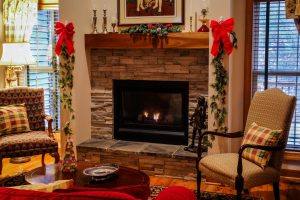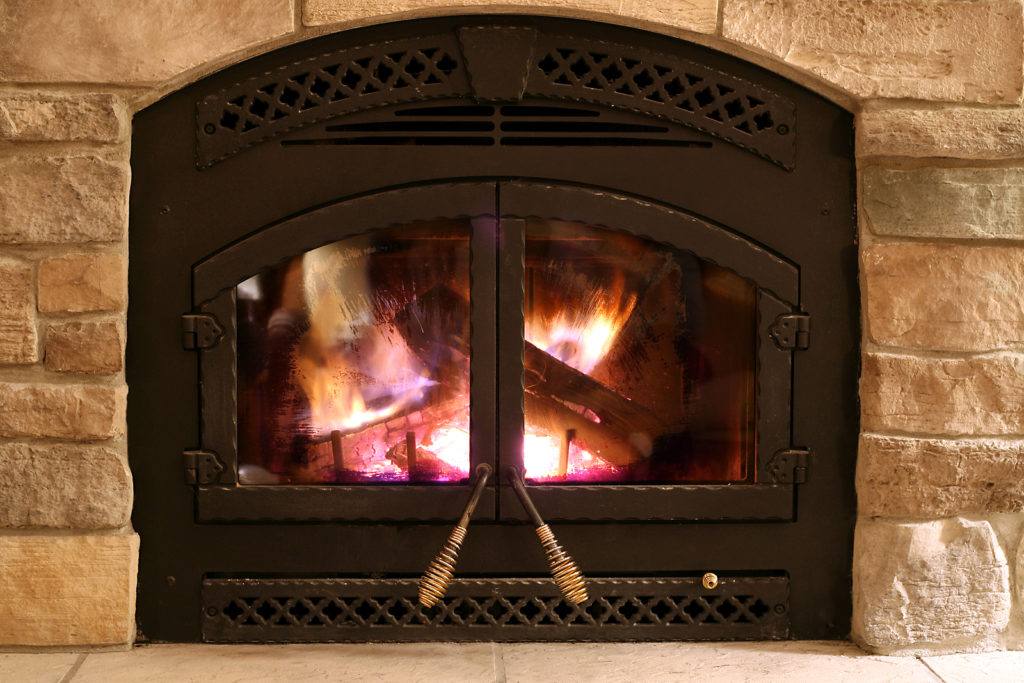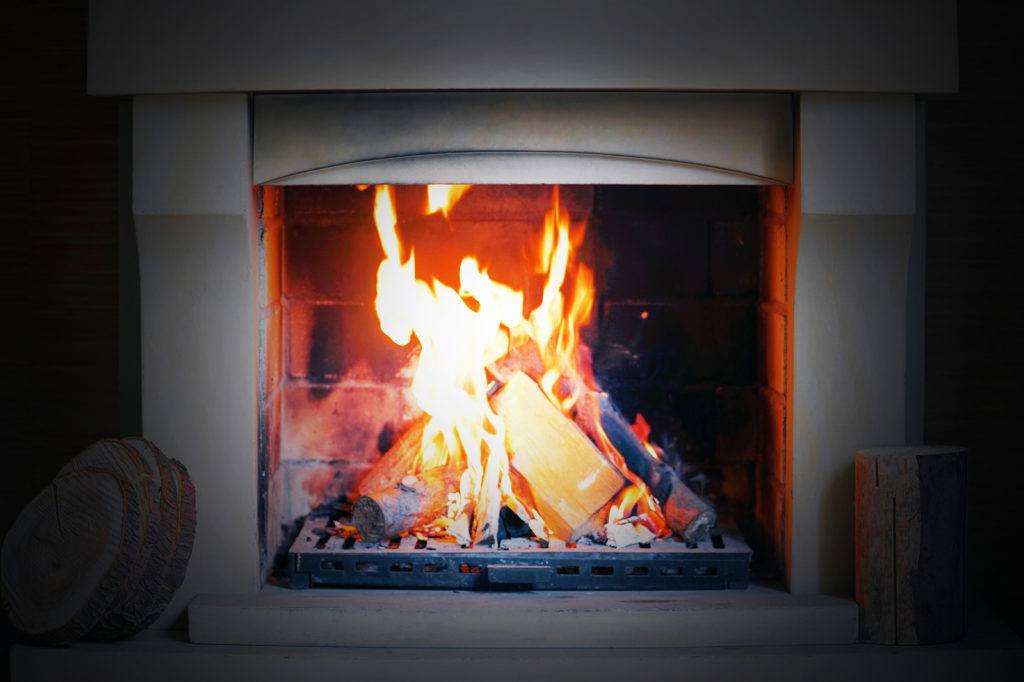Proposal to phase out wood burning fireplaces in the Bay Area ended. Full article available at Contra Costa Times
Category: Wood Burning Device
What Options Do I Have For Fireplace Conversion?
Wood burning fireplaces offer a certain charm and ambience to your home, but when it comes to heating and environmental efficiency they are far from the best choice. If you have a fireplace at home, you may want to keep it, while also making it safer, more efficient, and more environmentally friendly. That’s where fireplace conversion can be the ideal way to transform your inefficient wood burning fireplace into a more efficient and functional heating installation.
The Problem With Wood Burning Fireplace Conversion
Wood burning fireplaces can be one of the most inefficient options, with much of the heat from within the home and as well as the heat generated from the fire simply being lost through the chimney. Wood burning fireplaces also add smoke, pollution, and particulate matter to the air which can trigger allergies and asthma and contribute to environmental pollution. Wood burning fireplaces increase the risk of chimney fires and home fires due to the buildup of creosote as a byproduct of wood burning.
Fortunately, when it comes to switching out your wood burning fireplace for a cleaner, more efficient version, you have a number of options.
Wood Burning Fireplace Inserts
Wood burning fireplace inserts retain the charm of traditional wood burning fireplaces, while lessening the environmental impact. Wood burning inserts reduce drafts and heat escaping from the fireplace, while ensuring wood burns hotter and more completely. Wood burning fireplace inserts can fit right into a traditional fireplace, converting it into a more efficient option.
Artificial Gas Logs
Artificial gas log fireplaces can offer an economical option that gives the effect of a real wood-burning fireplace without the pollution and the mess. Artificial gas logs may still need to be installed with glass door enclosures to reinforce insulation and prevent heat loss. Gas log fireplaces use gas as a fuel which can be more economical than firewood (if you need to pay for firewood). Gas log fireplaces provide reliable heat without the pollution of smoke and the mess of ash and creosote.
Gas Fireplace Insert
A gas fireplace insert is like a gas heater installed within the firebox of the existing fireplace. Because they are sealed, they are more efficient than gas logs and can provide reliable heat with adjustable flames. Gas fireplace inserts can cost more to install initially but can offer a more efficient heating solution without the health and environmental concerns of other fireplace options.
Electric Fireplace Insert
Electric fireplaces can be useful as they don’t require a chimney to vent. That means if your chimney is not functioning you can still create the effect of the fireplace with an electric insert. The drawback of an electric fireplace is that there are no flames, so it doesn’t have the same effect as other installations. While Electric inserts are inexpensive to install, electricity is generally not the most efficient fuel source. However electric inserts can provide a good source of heat as a nonpolluting alternative to an open fire place.
For environmental, health, and economical reasons, swapping out your traditional fireplace for a more efficient version makes sense. If you’re not sure which fireplace alternative is right for you, talk to our fireplace experts today to learn more about which fireplace conversion will work best for your home.
When Is The Best Time Of Year To Do Chimney Cleaning Service?
Wood burning fireplaces do require inspections, maintenance and chimney cleaning service. As winter approaches, you may be looking forward to cozy days around the fire. If you are lucky enough to have a wood burning fireplace, it can be easy to neglect through most of the year up until time to set up that first winter fire.
Now you may be wondering, why should I have my chimney cleaned and when?
Advantages of Regular Chimney Cleaning Service
As wood burns in your fireplace it releases smoke and ash, and over time, creosote can build up. If you have not heard of creosote, it is a flammable substance that builds up like a glaze, coating the interior of your chimney. Creosote needs to be removed regularly so it doesn’t build up and prevent the flow of smoke leaving the chimney. Also, because creosote is flammable, it needs to be removed to prevent chimney fires.
You should have your chimney inspected at least yearly and cleaned as needed. If you recently purchased a home, have the chimney inspected before using the fireplace. Regular maintenance and cleaning help to prevent larger problems and more expensive repairs. Having your chimney inspected, cleaned, and maintained each year will help keep your home and family safe.
When professionals clean your chimney, they remove soot and dangerous creosote built up on the interior. They will also check for any blockages, which could cause smoke to build up in your home if not removed. A professional will make sure everything is in working order for safe and effective operation.
Advantages of Spring or Early Summer Chimney Cleaning Service
Some say that spring is the best time to have your chimney inspected and cleaned. This is because winter weather might have damaged the masonry, which you would want to catch and repair right away during warm summer months. Additionally, a spring cleaning will get you ready for fall and winter fires, well ahead of the peak cleaning season, so you can avoid waitlists and have it done quickly.
Advantages of Late Summer or Fall Cleaning for your Chimney
Others would argue that fall is the better time to have your chimney cleaned. This is because when your fireplace has not been used in a while, such as during the spring and summer months, pests can enter and set up their homes. Rodents and birds can build nests that clog the chimney. This could be dangerous as smoke is then unable to flow through, and additional creosote could build up, increasing flammability.
Contracting chimney cleaning service company that will provide regular inspections and cleaning is your easiest option. They will remind you when it is time for your inspections. Given the advantage of both spring and fall cleanings, you may opt to have them both in order to maintain your fireplace if you use it often.
During inspections, the professionals will look for any problems, clean as needed, and perform or recommend necessary maintenance on your chimney. This can all help to prevent more serious operational issues and maintain a healthy, efficient function of your fireplace all year round.
How Does a Fireplace Insert Work?
Everyone loves the look of an open fire in a brick fireplace. It’s classic, familiar, beautiful. Did you know it’s also wasteful, inefficient and less clean than a wood heaters would be?
The design of an open fireplace allows a large portion of the heat generated to leave through the chimney. Wood heaters allow you to have efficient design and classic good looks, both! They work as a more efficient burners in the setting of a traditional fireplace. Wood burning fireplace inserts release less smoke and emissions than open fire and provide even better heating results. Inserts are used to convert traditional stone and brick fireplaces, which are inefficient and polluting, into effective heating systems.
How Does a Fireplace Insert Work?
A fireplace insert is similar to a wood heaters that’s been modified to fit within the firebox of a masonry fireplace. An insert consists of a firebox surrounded by a steel shell. Air from the room flows between the firebox and shell, taking heat back into the room. Heat distributor fans can be turned on to push heat into the home. They generally have glass doors for safety and you can see vents above, below, or next to the firebox for the circulation of air and heat.
Must You Sacrifice Form For Function?
In a short answer, no. Wood burning inserts are actually very natural looking in the setting of an existing fireplace. In fact, many homeowners build their original masonry fireplace with a Wood heaters structure from the beginning because of their rugged good looks and great efficiency. Many people don’t even realize that fireplaces are outfitted with Wood Burning Inserts because the look is so familiar.
Why Choose A Wood Burning Insert Over Keeping Your Old Fireplace
While it’s certainly possible that your old fireplace may have been dangerous, and a wood heaters is the safest solution, most people choose them for their advantages.
Environmentally Friendly
Wood is actually very environmentally friendly because it is a renewable, sustainable resource and is considered carbon-neutral to burn by the Carbon Trust. Did you know that if wood were naturally decaying in the woods, it would release the same amount of carbon as it does burning in your hearth? Today’s wood burning inserts combust the harmful fire byproducts that a traditional fireplace releases into the atmosphere. They emit less than 1 gram of smoke per hour, which exceeds the Environmental Protection Agency’s clean air standards.
Energy Efficient
Some wood burning insert models have over 80% efficiency. The dual combustion system within a wood heaters is what generates a hotter, longer lasting fire. The venting system prevents heat from quickly escaping up the chimney and fans push heated air into your home instead. With the right insert you can easily heat a large living space. You’ll go hours without having to add fuel to the fire.
Cost Effective
One load of wood can burn for up to 8 hours in the right fireplace insert, saving you on wood costs. Also, the heat provided to your home can allow you to zone heat through the cold months, instead of using a furnace system to heat the entire home. But the advantages are not reserved for winter! Insulation is placed around a fireplace insert during installation. This prevents cool air from escaping during the summer and hot air from leaking out during the winter. The glass doors of the insert also prevent downdraft problems, keeping your home well insulated.
Reduced Maintenance Costs
Fireplaces with a wood burning insert do need annual chimney cleaning, but an insert will reduce the cost of repairing and maintaining your fireplace through the years. With the installation of a fireplace insert, the integrity of a fireplace is fortified without the high price of rebuilding or renovating a masonry fireplace. Replacing or repairing a damaged insert is also significantly less expensive than repairing a masonry fireplace.
A Wide Range Of Looks And Features
Wood Burning Fireplace Inserts come in styles from slick and sleek, to traditional and ornate. The aesthetic range of offerings is almost overwhelming! You’ll surely find something that fits your style in the available selections. Inserts can also offer features not available with traditional fireplaces, like thermostat control, heat distributor fans and self-cleaning glass.
If you have any questions about wood burning fireplace inserts, just ask us at The Irish Sweep.
HOW TO MAKE A GREAT WOOD FIRE
There’s nothing quite like relaxing with a warm fire at home. Whether you’re snuggling with someone special or just chillin with the family, a warm and cozy fire makes chilly winter nights so much more comfortable. But there’s an art to creating a great wood fire in your fireplace. And no, we’re not talking about electric fireplaces, either! We’re talking about the real thing, so if you’re wondering how to build a great wood fire in your fireplace, here’s how to do it:
HAVE A CLEAN CHIMNEY
You’ve had your chimney cleaned each year so there are no blockages, right? Without a clean chimney you may end up with a smoky house, or even a chimney fire. Having creosote buildup and any blockages removed is an important safety step, so if you’re behind on maintenance, schedule a cleaning before you build a wood fire.
ALWAYS OPEN THE DAMPER
Don’t forget to open your chimney damper so smoke can exit the home. Smoke inhalation is dangerous, and can be deadly. Your damper is probably closed when not in use, to prevent heat loss from the home.
PRIME THE CHIMNEY FLUE
When you start, your flue will be cold. After opening the flue, cold air from outside will sink into the chimney. If you light the fire during this air sink, you’ll end up with smoke inside your home.
If you have a fireplace that uses a gas pipe to supplement the fire, turn it on and light the pilot without any wood in there. Let the flue warm up before adding the wood. To prime it, light a roll of newspaper and then hold it up the opening for a few minutes. When you feel the draft is now going up, the flue is primed!
CREATE AN ASH BED
You’ll want a 1” to 2” ash bed in the fireplace to help insulate it for a hotter fire. If you don’t use your fireplace often enough to have an ash bed already, you can use ashes from your outdoor grill.
MAKE A FIRE UPSIDE DOWN
An “upside down fire” will burn longer than other fire structures. Don’t put the tinder and smaller kindling on bottom and the bigger fuel logs in a teepee shape on top like you’ve seen on tv. Create a square layer of big logs on the bottom, and then a layer of medium logs perpendicular to those, and smaller ones across the top. Finish it off with bunched up newspaper or other tinder and light with a match from the top. This fire needs very little maintenance and may also burn cleaner since smoke won’t need to pass through logs.
Now it’s time to sit back and enjoy your cozy and comfy fire!




